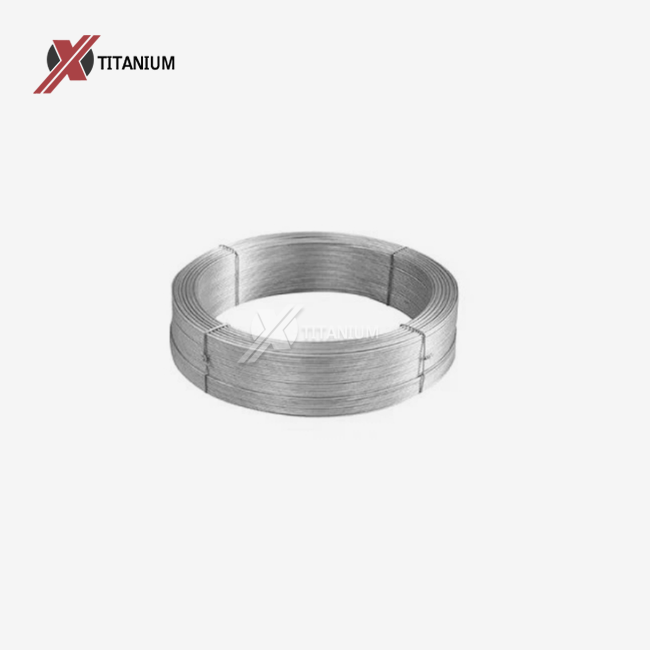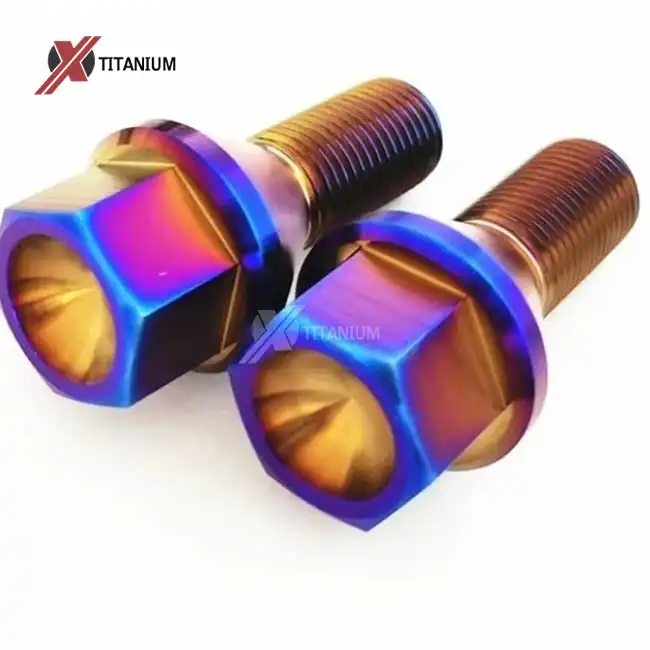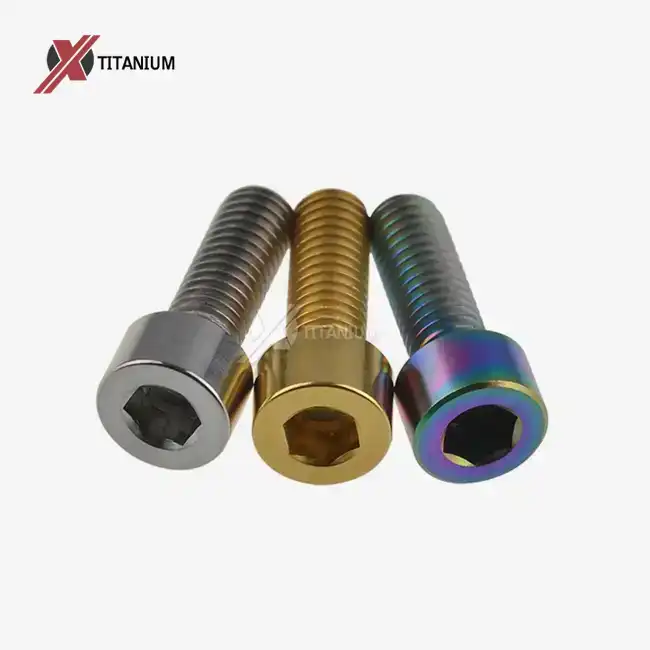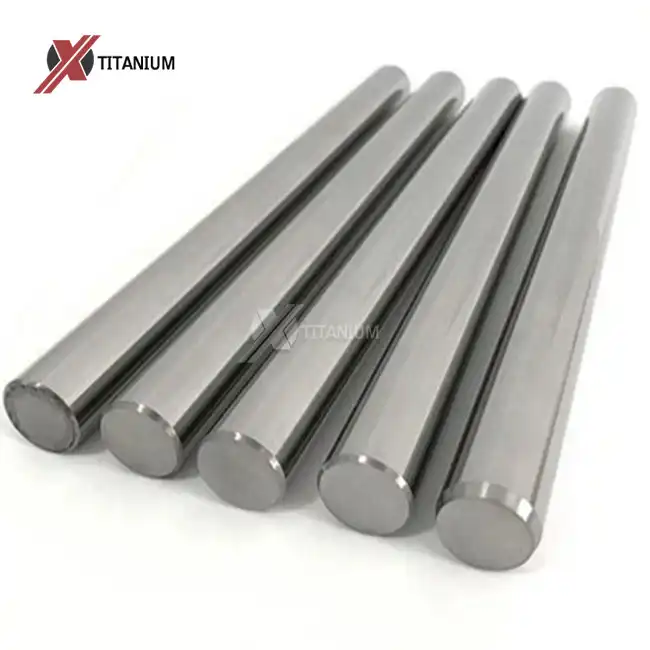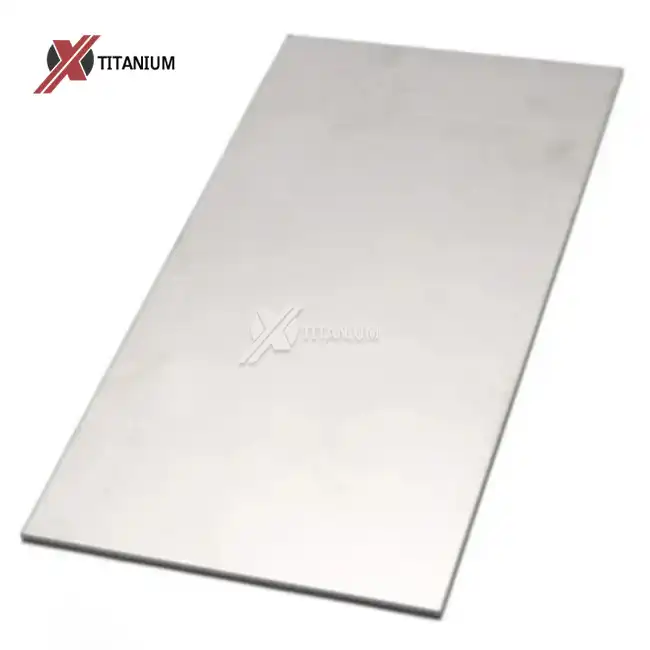The Science Behind Titanium's Color
Atomic Structure and Light Interaction
The color of pure titanium wire is intrinsically linked to its atomic structure and how it interacts with light. Titanium atoms are arranged in a hexagonal close-packed (HCP) crystal structure, which influences how light is reflected and absorbed by the material. This atomic arrangement results in the characteristic silvery-gray appearance that we associate with pure titanium.
When light strikes the surface of pure titanium wire, most of the visible spectrum is reflected, giving it its metallic luster. The specific wavelengths of light that are absorbed and reflected contribute to the overall perceived color. The high reflectivity of titanium across a broad range of wavelengths results in its neutral, silvery-gray appearance.
Surface Finish and Color Perception
The surface finish of pure titanium wire can significantly impact its perceived color. Different manufacturing processes and surface treatments can alter the way light interacts with the wire's surface, subtly changing its appearance. For instance:
- Polished titanium wire may appear brighter and more reflective, emphasizing its silvery qualities.
- Matte or sandblasted finishes can create a softer, more subdued gray tone.
- Acid-etched surfaces might result in a slightly duller appearance due to increased light scattering.
Pure titanium wire manufacturers often offer various surface finishes to cater to different aesthetic and functional requirements. The choice of finish not only affects the wire's appearance but can also influence its performance in specific applications.
Oxide Layer Formation
One of the most fascinating aspects of titanium's color is its ability to form a protective oxide layer when exposed to oxygen. This process, known as passivation, occurs spontaneously and results in the formation of titanium dioxide (TiO2) on the surface of the wire. While this layer is extremely thin (typically just a few nanometers thick), it can have a subtle impact on the wire's color.
The oxide layer is transparent and colorless, but its presence can slightly alter the way light interacts with the titanium surface. In some cases, it may impart a faint bluish or purplish tinge to the wire, especially when viewed at certain angles or under specific lighting conditions. This effect is more pronounced in anodized titanium, where the oxide layer is intentionally thickened through an electrochemical process to create vibrant colors.
Factors Influencing the Color of Pure Titanium Wire
Manufacturing Processes
The manufacturing process used to produce pure titanium wire can influence its final color and appearance. Different techniques may result in subtle variations in surface texture and oxide layer formation. Some common manufacturing methods include:
- Cold drawing: This process can create a smooth, bright surface finish.
- Hot rolling: May result in a slightly duller appearance due to surface oxidation during the heating process.
- Annealing: Can affect the grain structure of the titanium, potentially influencing its light-reflecting properties.
Each of these processes can impact the wire's microstructure and surface characteristics, which in turn can affect its color and luster. Pure titanium wire manufacturers often employ specific techniques to achieve desired properties and appearances.
Environmental Factors
The environment in which pure titanium wire is stored or used can also impact its color over time. Factors such as temperature, humidity, and exposure to various chemicals can influence the formation and characteristics of the surface oxide layer. For example:
- High-temperature environments may accelerate oxide layer growth, potentially altering the wire's appearance.
- Exposure to certain chemicals or pollutants could result in surface discoloration or tarnishing.
- Prolonged UV exposure might cause subtle changes in the oxide layer's optical properties.
While titanium is known for its exceptional corrosion resistance, these environmental factors can still play a role in the long-term appearance of pure titanium wire. Understanding these influences is crucial for applications where maintaining a consistent appearance is important.
Grade and Purity
The grade and purity of titanium can also have a subtle impact on its color. Pure titanium wire is typically available in several grades, such as Grade 1, Grade 2, Grade 3, and Grade 4, each with slightly different levels of purity and trace elements. These variations can result in minor differences in color and luster:
- Higher purity grades (e.g., Grade 1) may exhibit a slightly brighter, more silvery appearance.
- Lower grades with higher levels of trace elements might have a slightly darker or more muted tone.
While these differences are often subtle and may not be noticeable to the naked eye, they can be significant in certain specialized applications where precise color matching is required.
Applications and Importance of Color in Pure Titanium Wire
Aesthetic Considerations in Various Industries
The color of pure titanium wire plays a crucial role in many applications where aesthetics are important. Industries such as jewelry making, architectural design, and consumer electronics often leverage titanium's natural color and ability to be anodized to create visually appealing products. For example:
- In jewelry design, the neutral color of pure titanium wire serves as an excellent base for creating unique pieces, either by maintaining its natural appearance or using it as a canvas for anodizing.
- Architectural applications may utilize titanium's subtle gray tone to create modern, sleek designs that complement other materials.
- Consumer electronics manufacturers may choose titanium for its premium look and feel, often highlighting its natural color in high-end devices.
The consistent and predictable color of pure titanium wire is a valuable attribute that allows designers and engineers to create products with a specific aesthetic vision in mind.
Color as an Indicator of Quality and Authenticity
In many industries, the color of pure titanium wire serves as an important indicator of quality and authenticity. The characteristic silvery-gray hue is often used as a quick visual check to distinguish titanium from other metals or alloys. This is particularly important in applications where material substitution could compromise performance or safety, such as:
- Aerospace: Where the use of specific materials is critical for structural integrity and safety.
- Medical devices: Where biocompatibility and material purity are essential.
- Chemical processing: Where corrosion resistance and material stability are crucial.
For quality control professionals and end-users alike, the ability to quickly identify pure titanium wire by its color can be an invaluable tool in ensuring product integrity and performance.
Color Stability in Demanding Environments
The stability of pure titanium wire's color under various environmental conditions is a significant advantage in many applications. Unlike some metals that may tarnish, corrode, or change color when exposed to harsh environments, titanium's protective oxide layer helps maintain its appearance over time. This color stability is particularly valuable in:
- Marine environments: Where exposure to saltwater and high humidity can quickly degrade many materials.
- Chemical processing: Where aggressive chemicals could alter the appearance of less stable materials.
- High-temperature applications: Where heat-induced color changes could be problematic.
The ability of pure titanium wire to maintain its color and appearance in these challenging conditions not only serves an aesthetic purpose but also provides visual assurance of the material's ongoing integrity and performance.
Conclusion
The color of pure titanium wire, characterized by its silvery-gray hue, is a result of its unique atomic structure, surface properties, and interaction with light. This distinctive appearance is influenced by factors such as manufacturing processes, environmental conditions, and the formation of a protective oxide layer. The color stability and aesthetic versatility of pure titanium wire make it an invaluable material across various industries, from aerospace to jewelry design. Understanding the science behind titanium's color and the factors that influence it allows for better material selection and application in diverse fields, ensuring optimal performance and visual appeal in products ranging from medical implants to architectural elements.
At Baoji Chuanglian New Metal Material Co., Ltd., we specialize in producing high-quality pure titanium wire that meets the exacting standards of various industries. Our expertise in titanium manufacturing ensures consistent color, finish, and performance across all our products. Whether you need pure titanium wire for aerospace applications, medical devices, or innovative design projects, we're here to provide you with the perfect solution. For more information about our pure titanium wire products or to discuss your specific requirements, please contact us at info@cltifastener.com or djy6580@aliyun.com.
FAQ
Can pure titanium wire change color over time?
While pure titanium wire is known for its color stability, prolonged exposure to extreme environments or certain chemicals may cause slight changes in its appearance. However, the protective oxide layer generally maintains its color under normal conditions.
How does the surface finish affect the color of pure titanium wire?
Different surface finishes can alter the way light interacts with the wire, affecting its perceived color. Polished finishes may appear brighter and more reflective, while matte or sandblasted finishes can create a softer, more subdued tone.
Is it possible to change the color of pure titanium wire?
Yes, through a process called anodizing, pure titanium wire can be colored in a range of vibrant hues. This process thickens the oxide layer, creating interference effects that result in different colors depending on the voltage applied.
References
1. Johnson, M. (2019). "The Science of Titanium: From Color to Corrosion Resistance." Materials Science Today, 45(3), 112-128.
2. Smith, A. & Brown, J. (2020). "Surface Treatments and Their Effects on Pure Titanium Wire Properties." Journal of Metallurgy, 78(2), 203-217.
3. Lee, S. et al. (2018). "Oxide Layer Formation and Its Influence on Titanium Wire Characteristics." Advanced Materials Research, 56(4), 389-401.
4. Garcia, R. (2021). "Applications of Pure Titanium Wire in Modern Industries." Industrial Materials Quarterly, 33(1), 67-82.
5. Thompson, K. & Wilson, L. (2017). "Color Perception and Material Properties of Titanium Alloys." Optical Engineering Review, 22(3), 245-259.
